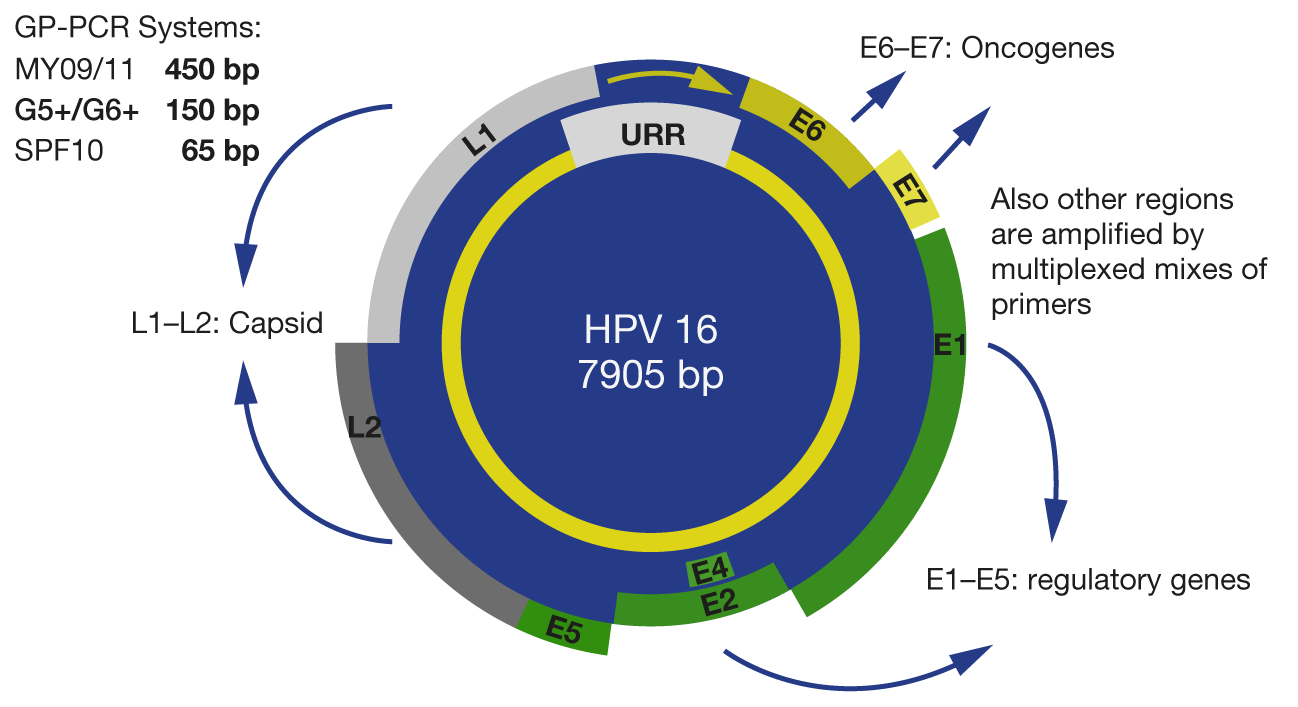Secondary Prevention of Cervical Cancer
Principle of PCR-based HPV Tests (1)
Principle of PCR-based HPV Tests (1)
Specific HPV genes are suitable for amplification.
The rationale of the polymerase chain reaction (PCR)-based HPV tests is explained in this and the following graph. The HPV genome has a canonical structure shared by all papillomaviruses. It is small with only 8 kb and codes for only 8 genes.
For genotyping, the most heterogenous sequences are chosen. Due to evolutionary pressure, the outer shell protein L1 is the most heterogenous sequence in the genome. It can be amplified by different general primer systems that allow for PCR amplification of all HPV types. The most commonly used L1 general primer PCR (GP-PCR) systems are the MY09/11, the GP5+/6+, and the SPF10 system.
Another approach targets the oncogenes E6 and E7 of the viral genome. These genes have the advantage that they are indispensible for transformation of the cells and are presereved during integration of the viral genome.
